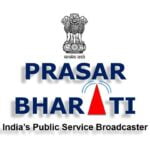In a pioneering move to ensure inclusivity within the film industry, the Ministry of Information and Broadcasting (MIB) has put forth comprehensive accessibility guidelines aimed at making feature films accessible for individuals with hearing and visual impairments. These guidelines are poised to instil a culture of inclusivity within the film industry, marking a significant step towards ensuring equal access to cinema for all.
Accessibility Standards Redefined
The proposed guidelines establish accessibility standards for audio description, closed and open captioning, and Indian Sign Language interpretation. With a focus on accuracy, synchronization, completeness, and proper positioning on the screen, both closed and open captioning guidelines have been outlined. Furthermore, the guidelines recommend the use of mixed case and italics while suggesting white text on a black background for captions to enhance readability.
Phased Implementation Schedule
To facilitate a smooth transition towards a more inclusive cinematic experience, the guidelines present a phased approach for implementing accessibility features in films. Within the first six months from the effective date, all feature films dubbed in multiple languages are mandated to provide at least one accessibility feature each for the hearing and visually impaired, including closed captioning and audio description.
Starting January 1, 2025, films submitted for consideration in prestigious events such as the National Film Awards, the Indian Panorama Section of the International Film Festival of India in Goa, and the Mumbai International Film Festival (MIFF) must compulsorily include closed captioning and audio description.
Finally, three years after the issuance of these guidelines, all other feature films intended for theatrical release must incorporate accessibility features for closed captioning, open captioning, and audio description.
Accessible Features Implementation in Theaters
The guidelines offer various avenues for cinema theatres to deploy accessible features, including dedicated shows, separate equipment during regular shows (such as mirror captions, closed captioning smart glasses, closed caption stands, closed caption displays below the screen, and headphones/earphones for audio description), mobile apps, and other technologies. The theatres are also encouraged to consider holding special screenings of accessible films upon demand. A self-regulatory mechanism is expected to be developed by theatres, ensuring the provision of a requisite number of seats with accessibility features within three years.
Public Awareness and Reporting Mechanism
Recognizing the importance of public awareness, the MIB has outlined that both the government and the film industry should take steps to inform the public about film accessibility requirements and the measures in place to promote accessibility. Film Industry Associations are expected to play a pivotal role in publicizing and creating awareness about the accessibility of feature films. Monitoring the outlined targets and reporting requirements will be entrusted to the Central Board of Film Certification (CBFC), the appropriate Government, film producers, and licensees of cinema theatres.
The Ministry of Information and Broadcasting is actively seeking feedback from the general public and stakeholders on these groundbreaking guidelines. Comments are invited until February 8, 2024, fostering a collaborative approach to refining and finalizing the proposed regulations.








2 replies
Loading new replies...
Join the full discussion at the DreamDTH Forums →